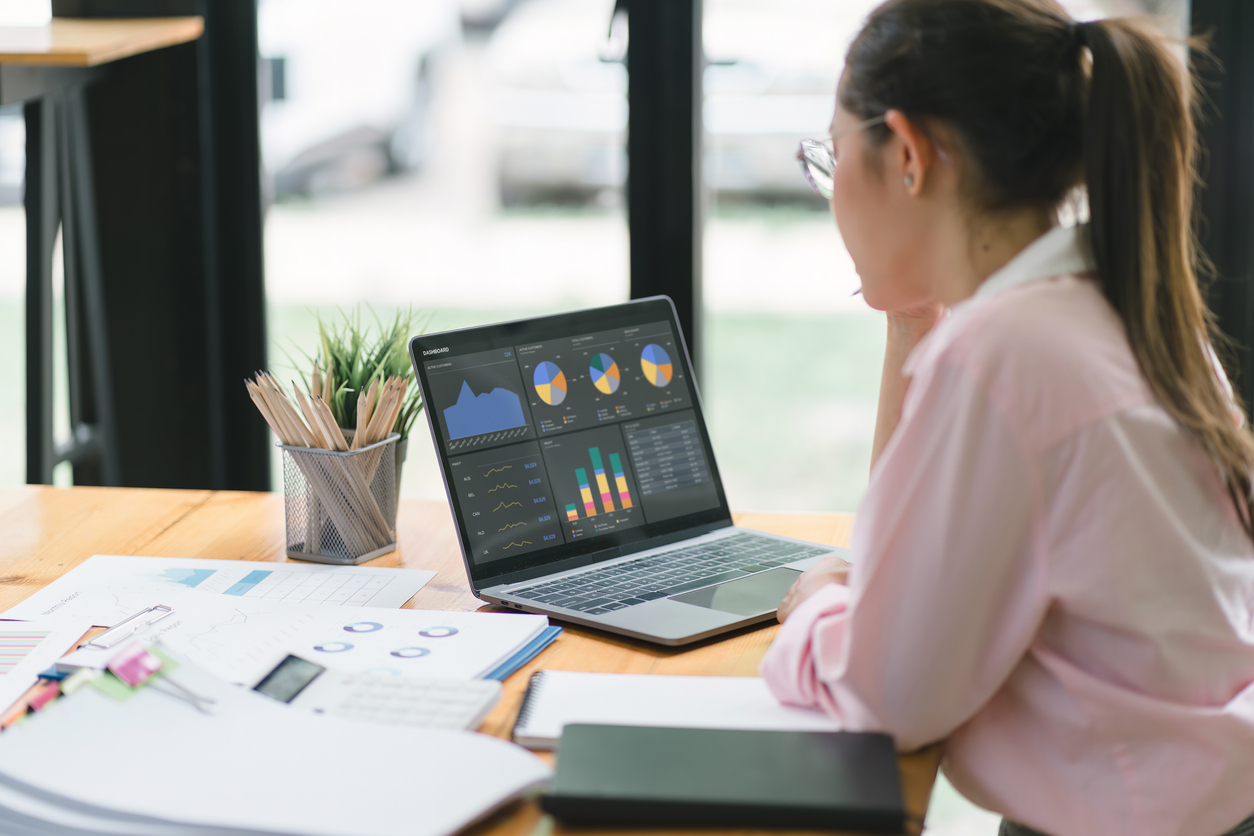Microeconomics vs. Macroeconomics: Understanding the Differences
Written by:
Wilson College
• Nov 4, 2024

Economics is the study of how societies create, deliver, and consume products and services, as well as the far-reaching implications that follow. It consists of two main branches: microeconomics and macroeconomics. Each offers a different perspective on economic issues. Knowing the differences between microeconomics and macroeconomics is vital for those seeking careers in business and finance.
A strong grasp of economics, including knowledge of its subsets microeconomics and macroeconomics, can help make jobseekers more competitive. A program such as a bachelor’s degree in finance not only covers financial principles but also includes courses in economics, data analysis, and critical thinking.
A foundation of key economic concepts can help prepare individuals for a wide range of roles. Understanding how economics shapes industries can empower them to help businesses thrive in an evolving global market.
What Is Microeconomics?
Microeconomics examines how individuals and businesses make choices about using limited resources. It examines consumer behavior and market dynamics, focusing on how consumers interact and make decisions. This field covers a wide range of topics, from pricing to production and beyond.
Core Principles in Microeconomics
The law of supply and demand is a key principle. It helps predict how price changes affect consumer behavior and production. Another is utility maximization. It suggests that people and firms make rational choices to improve their economic well-being.
Key Concepts and Theories in Microeconomics
Microeconomics involves concepts like consumer demand and production theory. Consumer demand links spending to preferences for goods and services. For example, an economist may ask, “What does a consumer give up when choosing one option over another?” Production theory explains how businesses allocate resources and determine output.
Real-World Applications in Microeconomics
Microeconomics shapes daily life and decision-making across the economy. It guides policymakers in setting minimum wages or offering subsidies. Businesses use it to inform pricing and production decisions. Individuals apply microeconomic concepts when making everyday choices, like buying a car.
What Is Macroeconomics?
Macroeconomics focuses on the economy on a larger, often national scale. Economists and others use it to analyze an economy’s performance and structure. They also study national output, growth, prices, and jobs through the lens of macroeconomics. Economists use this lens to understand large financial systems during short-term business cycles and long-term growth.
Core Principles in Macroeconomics
Three core principles form the foundation of macroeconomics: positive economic growth, price stability, and low unemployment. Positive economic growth refers to an increase in the production of goods and services over time, indicating a healthy and expanding economy. Economists track prices to make decisions that will prevent high inflation or deflation, seeking to keep prices fairly constant. Low unemployment aims to minimize the number of people who cannot find jobs. Together, these principles enable economists to analyze demand and supply.
Key Concepts and Theories in Macroeconomics
Key macroeconomic concepts include Gross Domestic Product (GDP), inflation, and unemployment. GDP calculates the total value of goods and services that a country produces over a specific period, providing a snapshot of a country’s economic health. Economists track the inflation rate as prices change over time. The consumer price index, a key indicator of inflation data, helps economists determine the purchasing power of money. Unemployment reflects the condition where individuals who are ready and willing to work are unable to find jobs.
Real-World Applications in Macroeconomics
In practical terms, macroeconomics informs policymakers in key areas such as government spending, taxation, and the banking system. These tools are used to address various economic challenges, such as controlling inflation or stimulating growth. Macroeconomics also takes international trade into account to examine its impact on a nation’s output and income, while highlighting its importance in the interconnected global economy.
Differences Between Microeconomics and Macroeconomics?
Microeconomics and macroeconomics are different, but they are interrelated. A comparison of microeconomics vs. macroeconomics reveals two primary differences: focus and approach.
Focus
Microeconomics focuses on individual economic units like consumers, households, and firms. It examines how these entities make decisions about resource allocation and pricing. By employing a bottom-up approach, it studies supply and demand forces that determine price levels in specific markets.
Macroeconomics takes a broader view, analyzing entire economies and large-scale economic phenomena. It adopts a top-down approach, looking at key metrics like GDP, unemployment, and inflation to understand how the overall economy functions.
Approach
Microeconomics hones in on the details of specific markets. Macroeconomics looks at the bigger picture, addressing economy-wide trends and patterns. Each has a distinct approach, but they complement each other. Decisions made at the micro level—by consumers and businesses—impact macro-level outcomes like national economic growth and stability. Similarly, macroeconomic trends influence individual behavior and market dynamics.
Build Economic Skills to Boost Your Business and Finance Career
Economics plays a crucial role in policymaking, business strategies, and personal financial choices. Understanding both micro and macroeconomic perspectives is essential for applying these principles effectively in business and finance. With a strong foundation in economics, individuals can help organizations make more informed decisions, build resilience, and strengthen their bottom line—gaining a competitive edge in the process.
Discover how Wilson College Online’s Bachelor of Arts in Finance program can open new doors for your career.
Recommended Readings
How to Become a Credit Analyst
Accounting vs. Finance: Which Degree Should You Pursue?
Sources:
Indeed, “Microeconomics vs. Macroeconomics: 6 Key Differences”
International Monetary Fund, “Micro and Macro: The Economic Divide”
Investopedia, “Macroeconomics Definition, History, and Schools of Thought”
Investopedia, “Microeconomics vs. Macroeconomics: What’s the Difference?”
The Decision Lab, “Microeconomics”
U.S. Bureau of Labor Statistics, “Business and Financial Occupations”


